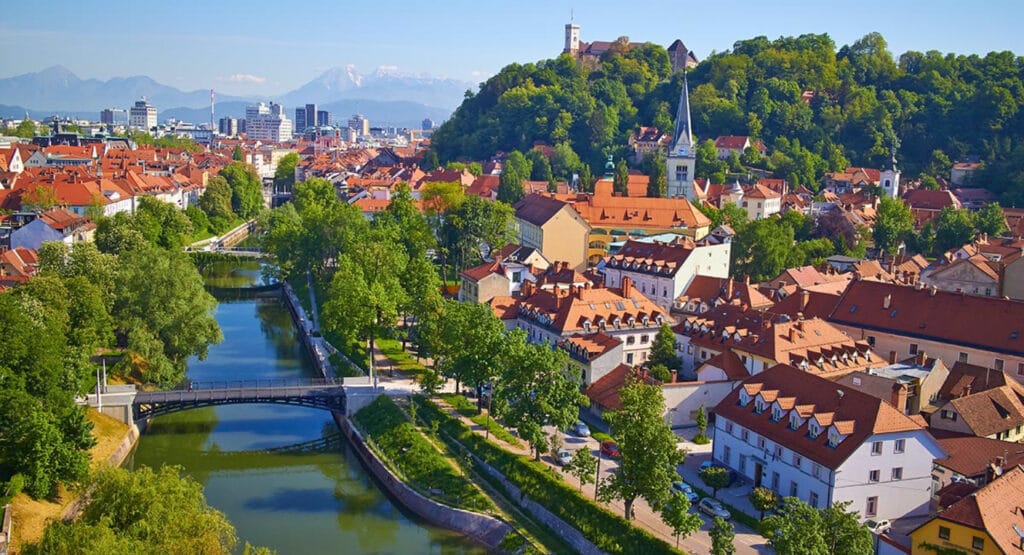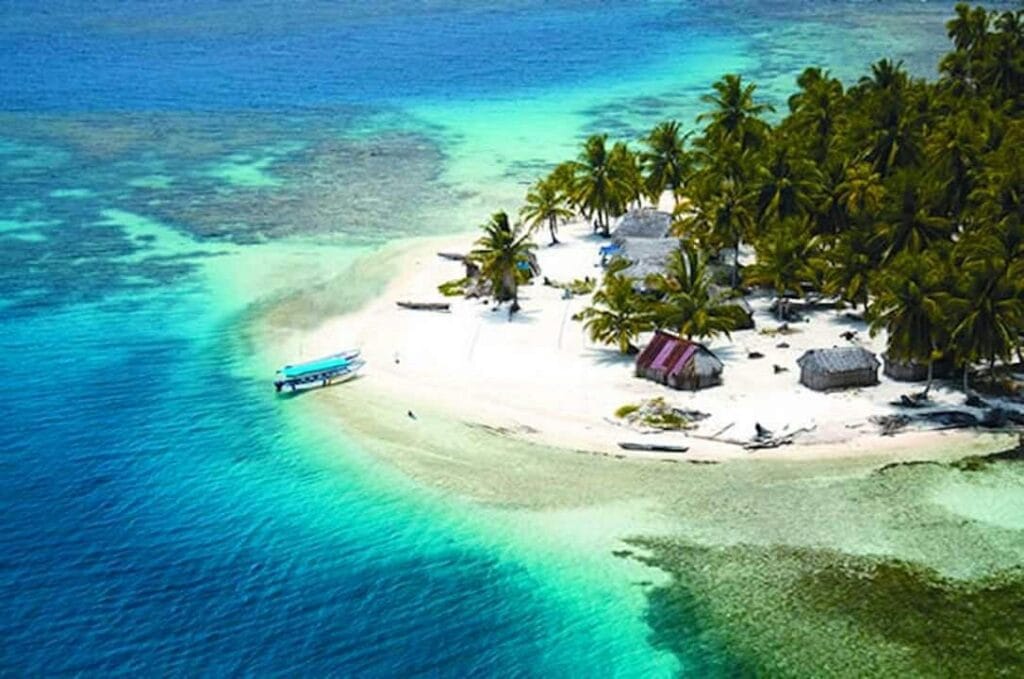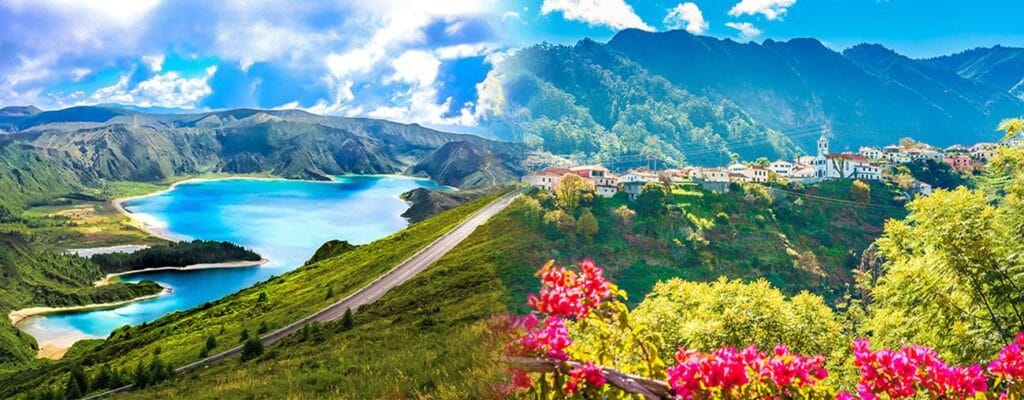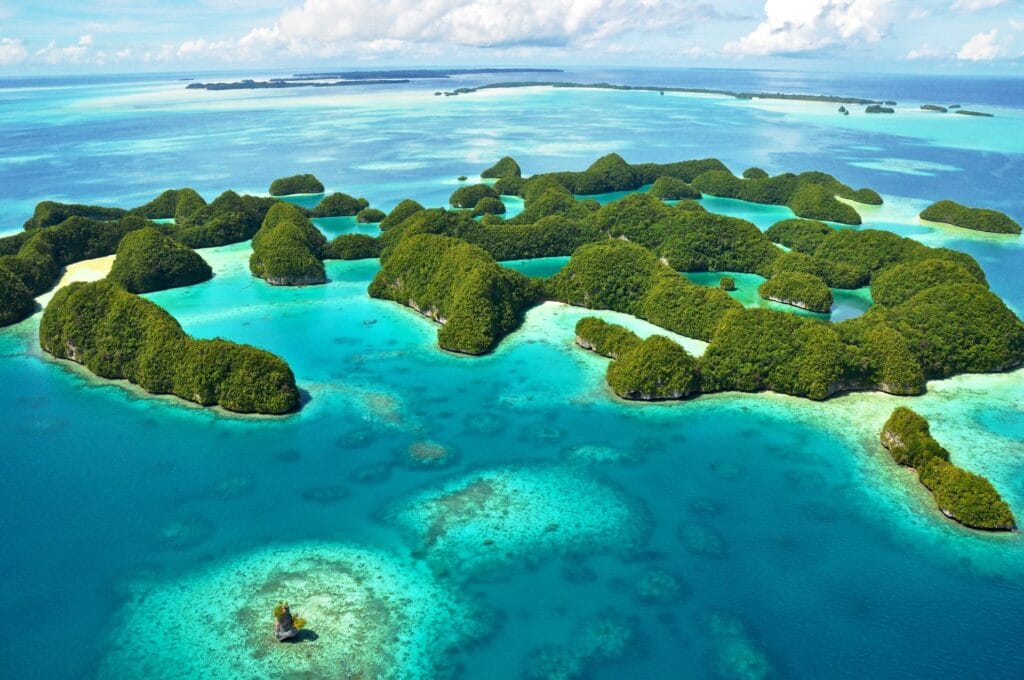In recent years, eco-friendly travel has become more than just a trend—it’s a responsible way to explore the world. For many travelers, the goal is not only to see new places but also to ensure that their journeys have a positive impact on the environment. While popular destinations like Costa Rica or Iceland are well-known for their commitment to sustainability, there are plenty of lesser-known, equally eco-friendly spots worth exploring.
In this blog post, we’ll look at five eco-friendly travel destinations you may not have heard about but should definitely add to your travel list. These hidden gems are ideal for beginners looking to travel with a minimal environmental footprint, offering unique landscapes, rich cultures, and opportunities to connect with nature responsibly.
1. Why Choose Eco-Friendly Travel Destinations?
Before we dive into the list, let’s take a moment to understand why eco-friendly travel is important and why choosing sustainable destinations can make a big difference.
Environmental Benefits
Eco-friendly travel destinations focus on minimizing their impact on the environment. These locations often prioritize conservation efforts, protect natural ecosystems, and promote sustainable tourism. By choosing these destinations, you help support local communities and businesses that work hard to preserve their unique environments.
Cultural Immersion
Many eco-friendly destinations emphasize community-based tourism and local traditions. This means that travelers have the chance to experience a culture more authentically while supporting local economies.
Personal Satisfaction
Eco-conscious travel allows you to explore the world while knowing that your choices are contributing to a healthier planet. Reducing your carbon footprint, supporting conservation projects, and staying in eco-lodges all contribute to a more fulfilling travel experience.
Pro Tip: Look for destinations that are actively working to reduce environmental degradation and have initiatives aimed at promoting sustainability.
2. How to Choose an Eco-Friendly Destination
When planning your next eco-friendly adventure, consider the following factors to ensure that your destination aligns with your sustainability goals:
- Environmental Certification: Look for destinations or hotels certified by organizations like Green Globe or EarthCheck.
- Sustainable Infrastructure: Research whether the destination promotes renewable energy, efficient public transportation, and waste management practices.
- Eco-friendly Accommodations: Choose eco-lodges or hotels that use sustainable practices, such as water conservation, recycling, and using local materials.
- Local Conservation Efforts: Support destinations that actively work to protect their natural ecosystems and wildlife.
Now that we’ve covered why eco-friendly travel is important and how to choose a destination, let’s dive into five hidden gems that you probably didn’t know about.
3. Top 5 Eco-Friendly Travel Destinations You Didn’t Know About
1. Slovenia

Why It’s Eco-Friendly:
Slovenia has emerged as a leader in sustainable tourism. In fact, its capital, Ljubljana, was awarded the title of European Green Capital in 2016 due to its extensive green spaces, efficient waste management, and focus on clean transportation.
The country has over 50% of its land covered in forests, making it ideal for nature lovers. Slovenia encourages eco-friendly activities such as cycling, hiking, and staying in environmentally conscious accommodations. Slovenia also focuses on promoting local, organic food in its restaurants, minimizing the carbon footprint of food transportation.
Eco-Friendly Highlights:
- Explore Triglav National Park, a pristine area of mountains, forests, and lakes.
- Stay in green-certified accommodations like eco-friendly farms and nature lodges.
- Visit Ljubljana, known for its bike-friendly streets and electric vehicle-sharing system.
Best Time to Visit: Spring and summer (April to September) offer the best weather for hiking and outdoor activities.
| Eco-Friendly Feature | Example in Slovenia |
|---|---|
| Green Transportation | Bike rentals, electric buses |
| Eco-friendly Accommodations | Glamping at Green Village Ruševec |
| Conservation Focus | Triglav National Park |
2. Bhutan

Why It’s Eco-Friendly:
Bhutan is the only country in the world that measures its success in terms of Gross National Happiness instead of GDP, with a strong focus on environmental conservation. The country’s commitment to eco-friendly practices is profound, with a pledge to maintain 60% forest cover at all times and to remain carbon-negative—meaning it absorbs more carbon than it produces.
Bhutan also restricts the number of tourists through a “high-value, low-impact” tourism policy, ensuring that only mindful and sustainable tourism takes place. Visitors are charged a daily fee, which goes toward environmental preservation and the well-being of local communities.
Eco-Friendly Highlights:
- Visit the Tiger’s Nest Monastery, an iconic structure built on a cliffside.
- Experience Bhutan’s rich biodiversity at Jigme Dorji National Park.
- Stay at eco-lodges that focus on minimal environmental impact while offering authentic Bhutanese experiences.
Best Time to Visit: Spring (March to May) and autumn (September to November) are the best times for festivals, trekking, and outdoor activities.
| Eco-Friendly Feature | Example in Bhutan |
|---|---|
| Carbon-Negative Status | Bhutan absorbs more CO2 than it emits |
| Sustainable Tourism Policy | “High-value, low-impact” tourism |
| Cultural and Environmental Protection | Tiger’s Nest, community conservation |
3. Guna Yala, Panama

Why It’s Eco-Friendly:
Guna Yala is an archipelago off the northern coast of Panama, managed by the indigenous Guna people. The islands remain largely untouched by modern development, and the Guna practice sustainable tourism by limiting the number of visitors and controlling the impact of tourism on their land.
Visitors to Guna Yala can explore untouched coral reefs, pristine beaches, and mangroves while staying in simple eco-lodges that are often powered by solar energy. The local Guna people maintain their cultural traditions and use tourism as a way to support their communities without overexploiting their natural resources.
Eco-Friendly Highlights:
- Snorkel in crystal-clear waters while exploring coral reefs.
- Stay in solar-powered huts operated by the Guna people.
- Learn about the Guna culture through traditional craft-making and community-led tours.
Best Time to Visit: December to April is the dry season, offering sunny weather and calm seas for island-hopping and snorkeling.
| Eco-Friendly Feature | Example in Guna Yala |
|---|---|
| Indigenous-Led Sustainable Tourism | Guna-controlled tourism |
| Eco-friendly Accommodations | Solar-powered beach huts |
| Pristine Natural Ecosystems | Coral reefs, mangrove forests |
4. The Azores, Portugal

Why It’s Eco-Friendly:
The Azores is an archipelago in the Atlantic Ocean and one of the most sustainable travel destinations in Europe. The islands are known for their geothermal activity, breathtaking volcanic landscapes, and marine biodiversity. The Azores are committed to sustainability, with initiatives focusing on renewable energy, waste reduction, and eco-conscious tourism.
In the Azores, eco-conscious travelers can enjoy whale watching, hiking volcanic craters, and exploring geothermal hot springs—all while staying in eco-lodges and eating fresh, local produce.
Eco-Friendly Highlights:
- Hike around the Sete Cidades crater, one of the most beautiful volcanic lakes in Europe.
- Visit the geothermal areas of Furnas for natural hot springs.
- Join a whale-watching tour led by conservation experts to observe marine life without disturbing their habitats.
Best Time to Visit: May to October, when the weather is warm and ideal for outdoor exploration.
| Eco-Friendly Feature | Example in the Azores |
|---|---|
| Renewable Energy Initiatives | Geothermal power, wind energy |
| Eco-friendly Tourism | Whale watching, hiking, natural hot springs |
| Conservation Focus | Marine biodiversity, crater lakes |
5. Palau

Why It’s Eco-Friendly:
Palau, a Pacific island nation, is a leader in marine conservation. The country implemented the Palau Pledge, which all visitors must sign, committing to environmental protection during their stay. Palau has established one of the world’s largest marine sanctuaries, banning commercial fishing in over 80% of its waters to preserve its rich marine biodiversity.
Visitors to Palau can enjoy scuba diving in some of the healthiest coral reefs in the world, visit the famous Jellyfish Lake, and stay in eco-friendly resorts that support marine conservation projects.
Eco-Friendly Highlights:
- Explore Rock Islands and Jellyfish Lake, where you can swim with harmless jellyfish.
- Dive into some of the most vibrant and protected coral reefs in the world.
- Participate in eco-conscious tours that educate visitors on local marine conservation efforts.
Best Time to Visit: November to April, when the weather is dry and perfect for diving and snorkeling.
| Eco-Friendly Feature | Example in Palau |
|---|---|
| Marine Conservation Efforts | Palau Marine Sanctuary |
| Eco-tourism Initiatives | Palau Pledge, sustainable dive tours |
| Unique Natural Ecosystems | Jellyfish Lake, Rock Islands |
4. Eco-Friendly Travel Tips
While choosing eco-friendly destinations is a great start, here are some additional tips to minimize your environmental impact when traveling:
- Pack light: Reducing the weight of your luggage can lower the carbon emissions of your transportation.
- Support local businesses: Choose to eat at local restaurants and buy souvenirs from local artisans to boost the local economy.
- Use public transportation: Opt for buses, trains, or bikes over rental cars to reduce your carbon footprint.
- Carry reusable items: Bring reusable water bottles, bags, and utensils to reduce plastic waste.
- Respect wildlife: Avoid disturbing local wildlife and stick to eco-friendly tours that prioritize animal welfare.
5. FAQs About Eco-Friendly Travel Destinations
Q1: What makes a destination eco-friendly?
A destination is considered eco-friendly if it focuses on environmental conservation, promotes sustainable tourism, uses renewable energy, and minimizes waste. These destinations often have strong local conservation efforts and encourage responsible tourism.
Q2: How can I travel more sustainably?
Travel more sustainably by choosing eco-friendly destinations, minimizing flights, using public transportation, staying in eco-lodges, and supporting local businesses that focus on sustainability.
Q3: Are eco-friendly destinations more expensive to visit?
Not necessarily. While some eco-lodges or sustainable tours may have higher upfront costs, the benefits—such as supporting conservation efforts and preserving natural resources—can outweigh the expense. Additionally, eco-friendly travel often encourages simpler, low-impact activities that are budget-friendly.
Q4: How do I know if a destination is truly eco-friendly?
Look for certifications like Green Globe, EarthCheck, or LEED (for hotels) to ensure a destination meets environmental sustainability standards. Research destinations that prioritize conservation, renewable energy, and sustainable tourism practices.
Conclusion
Exploring the world doesn’t have to come at the expense of the environment. By choosing eco-friendly destinations like Slovenia, Bhutan, Guna Yala, The Azores, and Palau, you can enjoy the beauty of nature while supporting efforts to protect it. These hidden gems offer rich cultural experiences, stunning landscapes, and opportunities to travel with a minimal environmental footprint. As you plan your next adventure, consider these sustainable destinations for an unforgettable, eco-conscious journey.



0 Comments